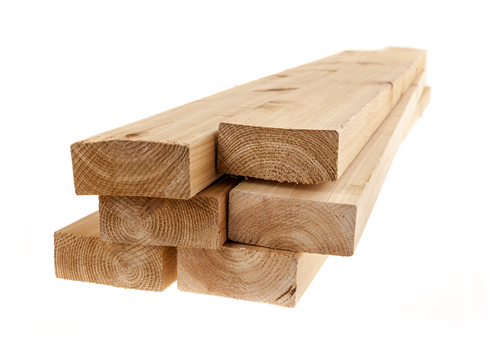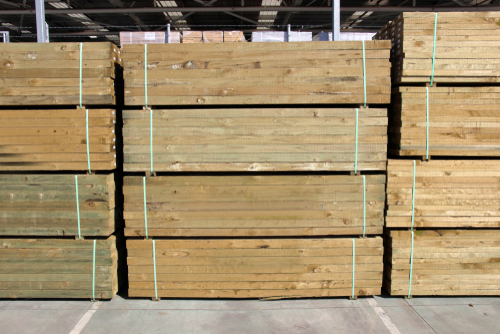March 19, 2024 - Benjamin Ehinger
How to Dispose of Treated Wood: Safe and Eco-Friendly Methods
CALL NOW 844-762-8449
Disposing of treated wood requires a good understanding of the materials you’re dealing with and awareness of the environmental and legal implications. Treated wood has been chemically altered to resist pests and weather conditions, which means it can be harmful if not disposed of correctly. It cannot be discarded like regular household waste because the chemicals can leach into the soil and groundwater. To ensure safe and responsible disposal, you’ll need to be informed about the options available to you and follow the relevant guidelines for waste material.
Moreover, determining the right disposal method is vital for maintaining safety and environmental health. Renting a local dumpster, such as those available from Waste Removal USA, can be an efficient solution for disposing of large amounts of treated wood. Of course, for smaller amounts or occasional disposal needs, local waste management policies may provide the guidance and facilities required to ensure treated wood is handled properly. Always remember to consider the possibility of repurposing or recycling the wood; alternatives like these can reduce waste and may even offer creative or practical benefits.
 When disposing of treated wood, your main options include landfill disposal and seeking alternative disposal methods that may include recycling or donation. It is crucial to handle this material responsibly due to the chemicals it contains.
When disposing of treated wood, your main options include landfill disposal and seeking alternative disposal methods that may include recycling or donation. It is crucial to handle this material responsibly due to the chemicals it contains.
 Before disposing of treated wood, consider the environmentally friendly options of repurposing and recycling. These methods can prolong the life of wood and reduce waste.
Before disposing of treated wood, consider the environmentally friendly options of repurposing and recycling. These methods can prolong the life of wood and reduce waste.
Key Takeaways
- Proper disposal of treated wood is essential for environmental safety.
- Dumpster rental services provide a convenient disposal solution for large quantities.
- Exploring repurposing and recycling options can minimize waste.
Understanding Treated Wood
Treated wood is a common material used in various construction and outdoor applications. Your awareness of its types and chemical components is essential for its safe handling and disposal.Types of Treated Wood
Treated wood is designed to resist decay, pests, and weather-related damage. The most prevalent type is pressure-treated wood, which has been impregnated with chemical preservatives under high pressure to extend its life. This process has been widely used since 2004 and includes varieties that are specific to different environmental exposures and use-cases.Risks and Chemical Composition
The chemicals used in treated wood are potent and designed for durability, which presents certain risks. Pressure-treated wood typically involves copper as a base element, combined with other chemicals. Prior to 2004, chromated copper arsenate (CCA) was commonly used, which combined copper, arsenic, and chromium. After 2004, due to health and environmental concerns, CCA use in residential applications significantly decreased. Although modern treatments still use copper and other chemical preservatives, they often eschew arsenic and chromium. It’s crucial you handle these materials with care, as the chemicals can be hazardous if released into your environment or absorbed by your skin.Legal and Environmental Considerations
When disposing of treated wood, you must navigate a complex web of regulations and understand the environmental ramifications. Your actions should aim to comply with regulations while minimizing environmental harm.Disposal Regulations
Regulations for the disposal of treated wood vary by region, but they often hinge on whether the wood is considered hazardous waste. The Environmental Protection Agency (EPA) stipulates specific guidelines on a federal level, but you will need to consult local authorities in your area for precise instructions. For example, in California, treated wood is often regarded as hazardous due to the chemicals used in its treatment. Depending on where you are, even giving away treated wood or disposal in a regular landfill may be illegal.- Federal Regulations: Typically involve EPA oversight.
- State and Local Policies: May be more stringent. Check with local environmental health departments.
Environmental Impact
The environmental impact of improperly disposed treated wood cannot be understated. Chemicals used in wood treatment, such as creosote, can have negative effects and could leach into soil and water sources. Research from institutions like Virginia Tech University underscores the importance of preventing the leaching of toxins into the environment. Always handle treated wood disposal with care, as it can pose a threat to ecosystems if not managed correctly.- Leaching Concerns: Prevention of contaminant seepage into ecosystems.
- Responsible Practices: Adopt methods to mitigate environmental hazards.
Disposal Methods
 When disposing of treated wood, your main options include landfill disposal and seeking alternative disposal methods that may include recycling or donation. It is crucial to handle this material responsibly due to the chemicals it contains.
When disposing of treated wood, your main options include landfill disposal and seeking alternative disposal methods that may include recycling or donation. It is crucial to handle this material responsibly due to the chemicals it contains.
Landfill Disposal
Landfills are designed to safely contain substances, making them a suitable option for disposing of pressure treated wood. You should take your treated wood to a designated location at the landfill that specifically handles such materials. Some landfills may direct you to a transfer station within the facility, where the wood will be sorted and sent to an appropriate disposal area. Remember, not all landfills accept treated wood, so it’s important to confirm acceptance with your local facility.- Check with local landfills for accepted materials
- Transport treated wood to the designated location or transfer station for proper disposal
Alternative Disposal Options
In contrast to landfill disposal, you have several alternative disposal options. These include taking your treated wood to recyclers who can repurpose the material safely or offering it for free to those who can reuse it. However, because of the chemicals in treated wood, recycling options are limited. Ensure the recipient is informed about how to handle treated wood and that it is not used for inappropriate purposes, such as making children’s play equipment or garden beds.- Seek recyclers specialized in handling pressure treated wood
- List treated wood for free giveaways, ensuring recipients are aware of the wood’s treated nature
Safety and Precautions
When dealing with treated wood, it’s essential to prioritize safety due to its chemically infused nature. Proper handling techniques and protective equipment protect you from potential health risks.Handling Treated Wood
When you handle treated wood, it’s important to do so with care, especially if you’re working with items like furniture or porches. Always lift with your legs, not your back, to avoid injury. Keep the area well-ventilated to mitigate the inhalation of any sawdust or chemical residues, which may have adverse health implications.- Do:
- Use gloves to protect your skin from splinters and chemicals.
- Work in a ventilated area to reduce inhaling potentially harmful substances.
- Wash your hands thoroughly after handling.
- Don’t:
- Eat, drink, or smoke while working with treated wood to avoid ingesting any chemicals.
- Burn treated wood, as it can release toxic chemicals into the air.
Protective Equipment
For your safety, wearing the right protective equipment is non-negotiable.- Gloves: Wear durable gloves to prevent skin contact with wood preservatives.
- Goggles: Use safety goggles to shield your eyes from flying particles and dust.
- Dust mask: A properly fitting dust mask is crucial to prevent inhaling sawdust and chemical particles.
Repurposing and Recycling
 Before disposing of treated wood, consider the environmentally friendly options of repurposing and recycling. These methods can prolong the life of wood and reduce waste.
Before disposing of treated wood, consider the environmentally friendly options of repurposing and recycling. These methods can prolong the life of wood and reduce waste.
Creative Reuse
Repurposing your treated wood from projects like decks and fences can be both a creative and practical solution. Consider transforming your old deck wood into picnic tables, planters, or outdoor benches. By doing so, you maximize the material’s utility and provide a new life for the wood. Here’s how you can start:- Assess the Wood: Ensure the wood is still structurally sound for your intended project.
- Planned Project: Decide on what you will create, such as garden features or furniture.
Recycling and Upcycling
Recycling treated wood can be more challenging due to the chemicals involved, but manufacturers and special facilities may accept it for repurposing into new products. Upcycling, a form of recycling where the value of the item is increased, is an excellent option for residential uses where the wood remains visible and can add aesthetic value.- Contact Local Facilities: Reach out to see if they accept treated wood for recycling.
- Upcycling Ideas: Convert treated wood into decorative pieces or construct new utility items for your home.
Frequently Asked Questions
When it comes to disposing of treated wood, it is crucial to understand the appropriate methods and the environmental implications to ensure safe and responsible handling.What are the options for disposing of pressure-treated lumber?
The primary options for disposing of pressure-treated lumber include taking it to a local landfill that accepts treated wood, using a waste disposal service specializing in hazardous materials, or sometimes utilizing deconstruction services that can manage such waste properly.Can pressure-treated wood be recycled, and if so, how?
Pressure-treated wood should not be recycled due to the toxic chemicals it contains. These chemicals could contaminate the recycling process and ultimately pollute the environment.What are the environmental considerations for disposing of treated timber?
Disposing of treated timber should be done with caution as it contains chemicals that can leach into soil and water. It is important to follow local disposal guidelines and consider the long-term environmental impacts of improper disposal.What is the process for disposing of old treated wood decks?
When disposing of old treated wood decks, the process generally involves dismantling the deck, removing any metal fasteners, and transporting the cleaned lumber to an approved disposal site that can handle the chemicals present in the treated wood.How should one handle and dispose of wood containing nails?
When disposing of wood containing nails or other metal, ensure that the metal is removed prior to disposal. If metal cannot be removed, inform the disposal facility, as they may have a designated area or process for wood with metal still in it.Are there specific regulations for disposing of treated wood in California?
California has specific regulations regarding the disposal of treated wood, due to its classification as hazardous waste. Contact the California Department of Toxic Substances Control or check their latest guidelines for current disposal practices.RECENT BLOGS
Our Reviews
Glenda Lanier Prowell
1721758635
I have ordered an 11 yard dumpster to be delivered to my house.Lonier was extremely helpful and answered all my questions. The rate was very reasonable.
Cedric Smikle
1721660395
Amber was extremely professional and courteous. She answered all of my questions and even some that I didn’t know I needed to ask.
Cait Kaider
1721243051
I highly recommend Waste Removal USA for their responsiveness and how the staff work hard to provide exceptional customer service. They have done well by us and our clients. Thank you!
Easom Family
1721223306
Louiner Pierre-Louis Is awesome! Did a great job. Will definitely be using this same company for all my dumpster needs because of his awesome customer service! Thank you!!!
tabitha Vazquez
1720539988
Wonderful and fast customer service!
LATEST BLOGS






